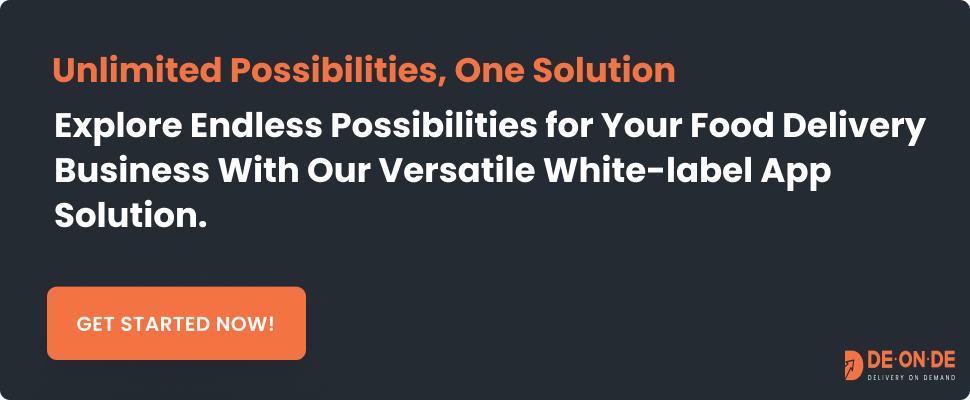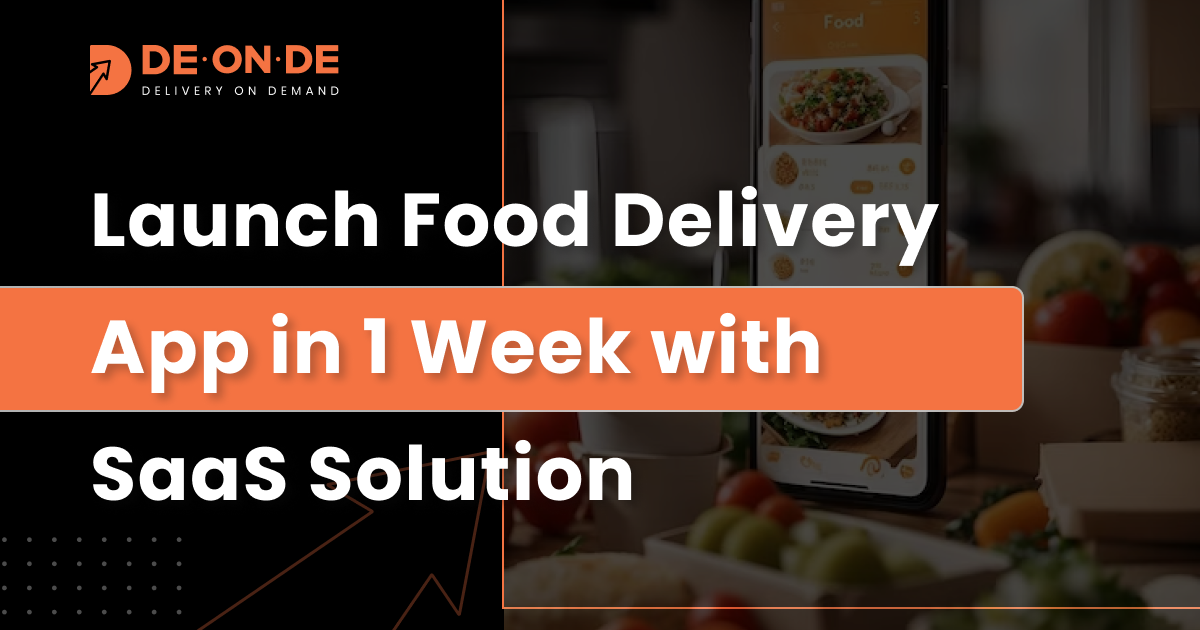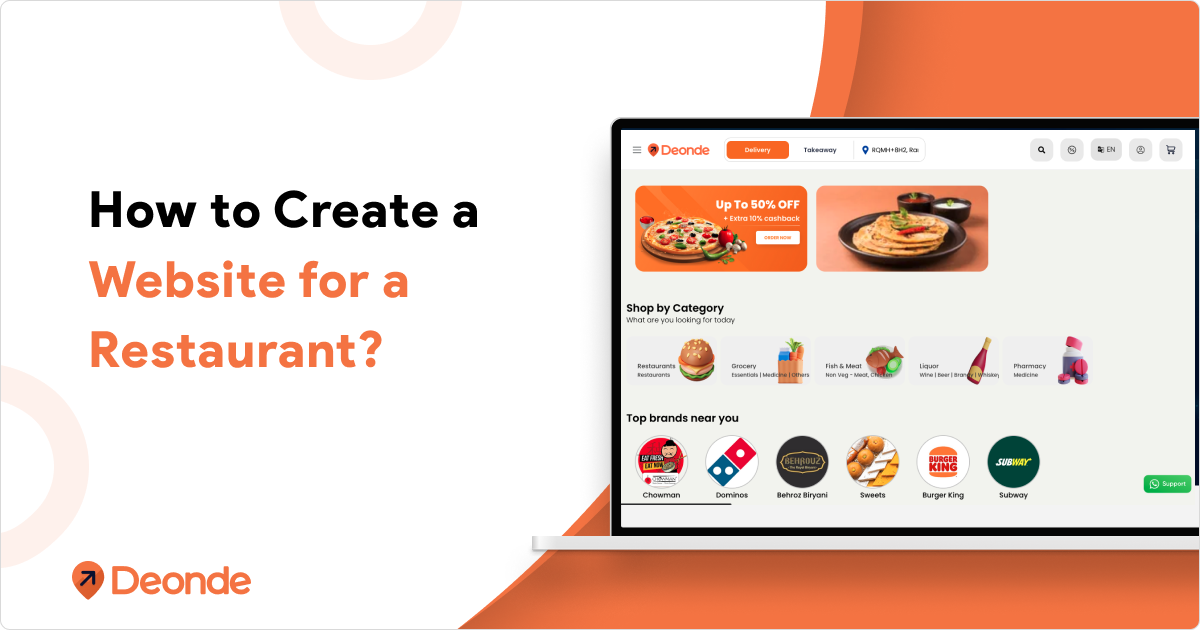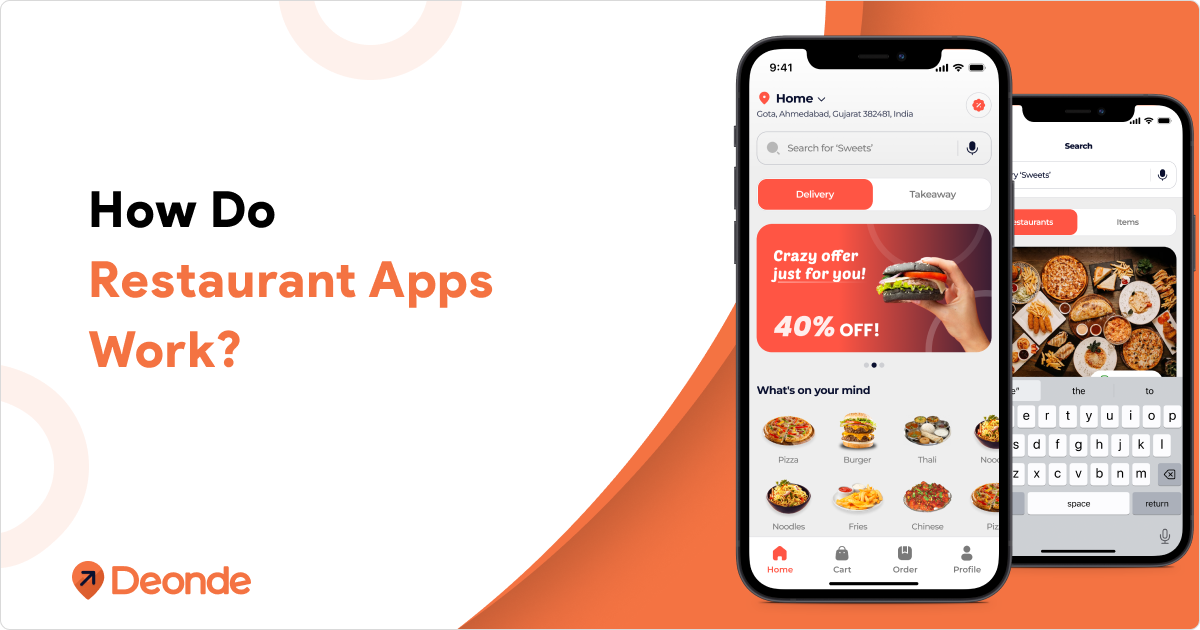The prospect of growth via the development of a food delivery website or app is incredibly alluring to owners of restaurants or franchises. If growth and increased reach are the goals, there are two approaches to consider. First, you can register your business with the Uber Eats platform and pay a service charge to the forum, or you may create your platform and keep all the revenue. This article reviews the main issues to watch out for in How to Launch Food Delivery App in 1 Week with a SaaS-based Solution.
To ensure success, adhere to these essential measures when developing your food delivery app or website.
What is a SaaS-based Food Delivery System?
The ideal option for restaurant operators is a SaaS-based food ordering system. Because some software is out of money, and people believe the program needs to be fixed. SaaS-based Food Delivery App Software is the ideal choice for an online platform.
Launch Food Delivery App in 1 Week with SaaS Solution – Steps
A week is a short amount of time to launch a food delivery service, so careful planning, effective execution, and a prepared crew are all essential. The process may be accelerated using a SaaS-based food delivery software solution, but controlling expectations and prioritizing basic features is necessary. Here is a thorough explanation of each action:
Day 1-2: Scheduling and Getting Ready
1. Select a SaaS Vendor:
- Examine the numerous SaaS-based food delivery apps. Some offer 7 Day’s Free Trial options currently offered on the market. Look for service providers who have characteristics that meet your company’s requirements.
- Think of scalability, customization possibilities, integration potential, and customer support.
2. Individualization:
- Set up the app with your branding components, such as your logo, color scheme, typefaces, and other unique design decisions that correspond to your brand identity.
- Create a unique layout and user interface for the app to guarantee a consistent and exciting user experience.
3. Restaurant Setup and Menu:
- Enter comprehensive details about the partner restaurants, such as their menus, food descriptions, pictures, and prices.
- Ensure that menu items are appropriately organized and shown for user-friendly browsing.
SEE ALSO: 3 Reasons How Your Restaurant Menu Inspires Your Restaurant Revenue!
Day 3–4: Configuring the App
1. Integration of payments:
Implement several payment alternatives, including credit/debit cards, digital wallets, and online banking, to appeal to a more extensive customer base. Select and integrate secure payment gateways to support online transactions.
2. Integration of location with a map:
- Implement geolocation services to enable users to enter their delivery addresses precisely.
- Integrate map capability allows consumers and delivery staff to track orders and deliveries in real-time.
3. User Registration and Authentication:
- Set up password generation and user registration using email addresses or phone numbers.
- Consider incorporating social network login alternatives (like Google or Facebook) for a quicker onboarding process.
Day 5–6: Quality Control and Testing
1. Functional Testing:
Test each app function: menu browsing, order placing, payment processing, and tracking. Ensure there are no serious issues and all user interactions achieve the desired results.
2. Testing the User Experience:
- Participate in usability testing for the app with people not involved in its creation.
- Ensure that users can quickly browse the app and that the user experience is intuitive.

3. Testing for Order Fulfillment:
- Recreate various order scenarios, including placing, canceling, and amending orders.
- To guarantee seamless operations, test every step of the order fulfillment process, including order confirmation, shipment, and delivery.
Day 7: Launch and Marketing
1. App Store Submission:
Prepare all essential materials for submission to the app store, including icons, images, descriptions, and privacy rules.
2. Marketing and Promotion:
- Create a fundamental marketing strategy to publicize the release of the app. Use email marketing, social media, and any other channels your target audience uses.
- Consider providing time-limited deals or discounts to entice people to test the app.
Extra Tips: Top 7 Restaurant Promotion Ideas and Marketing Strategy
3. Debut Announcement:
- Publish a formal statement about the app’s debut on your website, social media accounts, and other communication channels.
- Give consumers simple instructions on how to download and use the app.
After Launch: Ongoing Development
1. Collect User Comments:
- Through in-app prompts or post-order surveys, encourage users to share comments on their experience using the app.
- Pay attention to both complimentary remarks and locations where consumers run into problems.
2. Track Analytics:
- Track app analytics with 360 Analytics Dashboard to learn more about user behavior, top menu items, conversion rates, and other critical performance metrics.
- Analytical tools can be used to spot possible bottlenecks or opportunities for development.
3. Iterative Upgrades:
- Plan and carry out iterative upgrades to improve the functionality and user experience of the app based on analytics and user input.
- Release updates often address problem corrections, performance improvements, and new additions.
Using a SaaS-based solution, weekly deploying a food delivery service involves careful planning, prompt execution, and ongoing quality improvement initiatives. Even if the fast schedule presents difficulties, prioritizing crucial features, thorough testing, and maintaining user engagement will help the app launch successfully and enjoy long-term success. While speed is vital, providing a dependable and user-friendly experience is also paramount.
Also Read: Top Food Delivery Apps in USA
Benefits of a SaaS-based Platform for Food Delivery
1. Minimal Investment: No significant expenditure is required for the creation and upkeep of the system. The monthly membership price for this program is required.
2. Support Applications for iOS and Android: The SaaS-based food ordering system supports iOS and Android applications and is accessible online.
3. Simple to Use: The online food ordering system is accessible to business owners anytime, anywhere.
4. Choose a Standard or Premium Bundle: Entrepreneurs might choose a simple food delivery system bundle to start their business online. He can then select from the plus, premium, or enterprise options.
5. All Data are Secure: Your restaurant data is securely stored and backed up in the cloud using our SaaS-based food delivery service. In case of system issues, your data remains safe and accessible, ensuring uninterrupted business operations and peace of mind.
6. Your Brand: Entrepreneurs may acquire a lifetime license for the code when they buy an online food delivery application.
7. Regular Software Updates: Software for on-demand food delivery based on SaaS may update automatically, depending on your bundle.
8. App is Ready to Launch: Your app will be launched using pre-made software for online food delivery.

Conclusion
Many business owners and organizations are looking for a customized and distinctive solution to Develop SaaS-based Food Delivery Software. DeOnDe has a plethora of experience in creating comparable apps, so we can assist you in launching a fantastic food ordering platform in the market. Before creating a food delivery app for your business, we analyze industry trends to identify the best ways to deploy resources. Easily launch your food delivery app in 1 week with DeOnDe SaaS-based Solution, our team is passionate about offering our customers speedy, original solutions. Consequently, contact us for a free technical consultation to build a food delivery app.
Frequently Asked Questions
- What is the price of developing a SaaS-based food ordering app?
Ans: The cost of developing a food delivery app varies depending on its features. An online food ordering application typically costs between US$ 10 and US$ 25,000. If one wants to create a food delivery app with more sophisticated features, the cost starts at US$ 50K. - Where can I find the top programmers to build a food-ordering app?
Ans: DeOnDe developers have years of experience creating apps for ordering takeaways and can complete your app In under 1 week. - Which are the most popular food delivery apps worldwide?
Ans: ChowNow, DoorDash, Foodpanda, Uber Eats, and GrubHub are a few examples of the top food delivery applications. - What benefits may you get from purchasing an online food ordering app?
Ans: The benefits of having an online food ordering app include high scalability, improved security features, accessibility to user analytics, online presence, more straightforward branding, and affordability.





